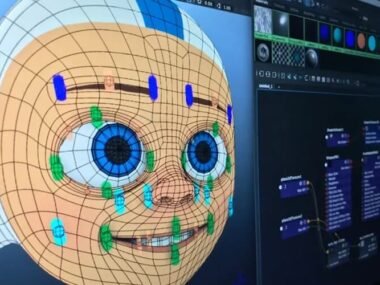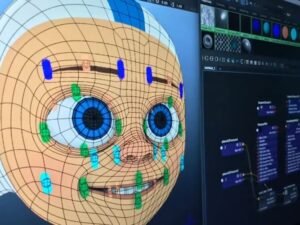Creating a screenplay for an animated film can be one of the most exciting and rewarding challenges for a writer. Unlike live-action films, animated films allow you to push the boundaries of creativity, visual storytelling, and character development. Whether you’re crafting a story for 2D, 3D, or stop-motion animation, the principles remain the same.
In this guide, we’ll walk you through the essential steps of how to write a screenplay for an animation, covering everything from story structure to character development and dialogue.
Understanding the Basics of Animation Screenwriting
Screenwriting for animation differs from writing for live-action because of its reliance on visual storytelling. Animation allows for limitless creativity, but it’s essential to craft a screenplay that can guide animators, voice actors, and directors.
Key Points to Consider:
- Visual-Driven Storytelling: Since animation is a visual medium, much of the storytelling is done through imagery rather than dialogue.
- Character-Driven Plots: Strong, relatable characters drive the best-animated films.
- Unique Worldbuilding: Animation allows for the creation of fantastical worlds, but the screenplay must make these worlds feel believable.
Creating a Solid Structure
Just like any screenplay, animation scripts follow a three-act structure: Setup, Confrontation, and Resolution. However, animations often include more dynamic pacing, unique transitions, and heightened stakes.
Basic Three-Act Structure for Animation Screenplays
| Act | Purpose | Key Elements |
| Act 1 | Introduce characters and setting | Establish world, introduce conflict |
| Act 2 | Develop the conflict | Characters face obstacles, rise in tension |
| Act 3 | Resolve the story | Conflict reaches a climax, resolution is achieved |
Character Development

Characters are the heart of any animated story. When creating characters for animation, think beyond their dialogue and actions. Consider how they look, move, and react to their environment.
Character Development Checklist:
- Appearance: How does the character’s design reflect their personality?
- Backstory: What events have shaped this character’s motivations?
- Growth Arc: How does the character evolve throughout the story?
Writing Visually
In animation, the visual aspect is more important than ever. As a screenwriter, it’s vital to write scenes that will captivate and communicate through images.
Tips for Writing Visually:
- Show, Don’t Tell: Use action and visuals instead of heavy dialogue to convey emotions.
- Use Storyboards: Collaborate with the art department to ensure your vision is represented visually.
- Pacing: Animation has more flexibility in time, allowing for visual gags and extended sequences that can enhance storytelling.
Crafting Dialogue for Animation

Animated films often rely on exaggerated dialogue and humor, but it’s crucial to maintain balance. Characters should speak with purpose, driving the plot forward while entertaining the audience.
Dialogue Writing Tips:
- Less Is More: Use concise dialogue to avoid overwhelming the audience.
- Distinct Voices: Ensure each character has a unique speaking style.
- Humor and Emotion: Use humor to keep the story light but weave in emotional depth when necessary.
Formatting an Animation Screenplay
Screenplay formatting for animation is slightly different from live-action. It includes detailed descriptions of action, camera angles, and, sometimes, specific movements. Each scene needs to be vividly described to guide animators.
Standard Animation Screenplay Format
| Element | Description |
| Scene Heading | Describes location and time (e.g., INT. HOUSE – DAY) |
| Action | Detailed description of what happens on screen |
| Dialogue | Name of the character and their spoken words |
| Camera Directions (Optional) | Specific shot types or camera movements |
Incorporating Software and Technology

Writing a screenplay for animation also means staying up to date with modern animation software and tools. Many writers collaborate with animators to ensure the script can be brought to life effectively.
In today’s age, numerous animation software programs allow writers to visualize their scripts, making collaboration smoother. However, you might wonder, are old animation software easier to use? Surprisingly, some older software can be simpler for beginners but lack the sophistication of newer tools.
Revising and Editing Your Animation Screenplay
Once you’ve completed your first draft, it’s time for revisions. Animation screenplays often go through multiple rewrites to refine pacing, dialogue, and visual storytelling. Pay special attention to how well your story flows and whether the visuals align with the written narrative.
Key Steps in the Revision Process:
- Check Pacing: Ensure that the story moves at an engaging pace, with no unnecessary lulls.
- Evaluate Character Arcs: Are your characters growing and changing throughout the story?
- Improve Visual Clarity: Can animators and directors clearly visualize your scenes from the script?
Collaboration is Key
Writing for animation is a collaborative effort. Screenwriters work closely with directors, animators, and voice actors to bring the story to life. Be open to feedback, especially when it comes to the feasibility of scenes and the portrayal of characters.
Conclusion
Writing a screenplay for an animation is a rewarding but complex process that involves both creative and technical skills. From creating compelling characters to ensuring your scenes are visually captivating, the steps above will help guide you through crafting a standout animated screenplay.
FAQs
Popular screenwriting software like Final Draft and Celtx offers animation-specific templates, making them ideal for beginners and professionals.
An animated feature film script is usually around 80-90 pages, though the exact length can vary based on the pacing and style.
Yes! The writing process focuses on story, dialogue, and scene direction, while animators handle the visual creation.
One common mistake is relying too much on dialogue instead of using visual storytelling to convey emotions and actions.
Start by outlining your story, developing characters, and thinking about how you can show, not tell, the action.











